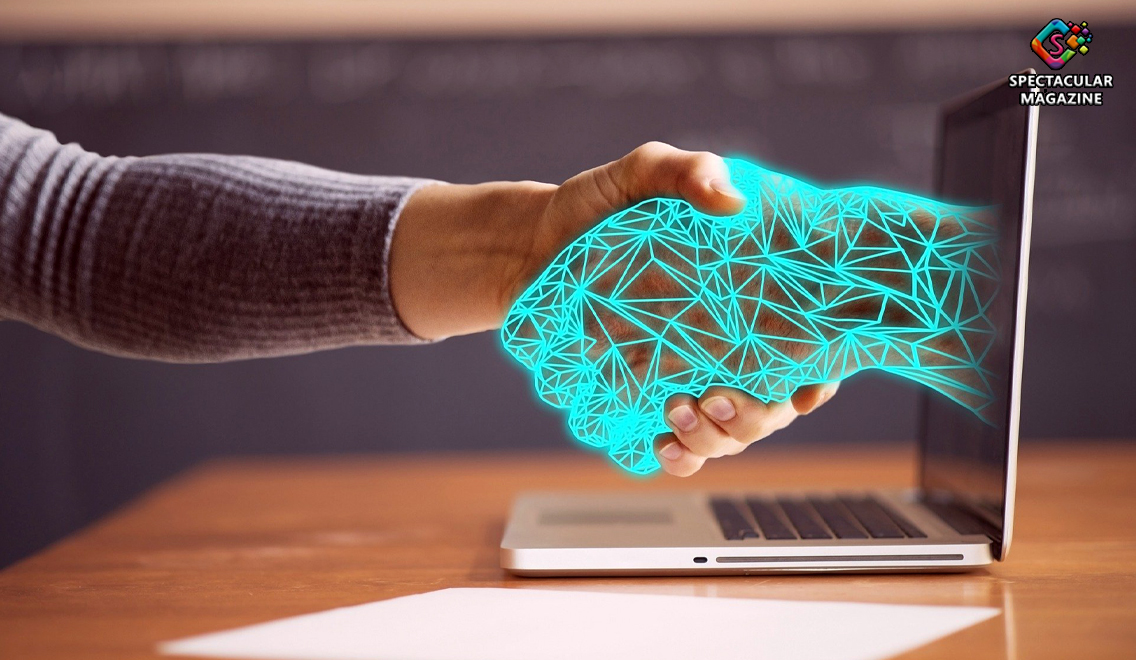People And Machines: What Is The Future Of Human-Computer Interactions?
People have been questioning the nature of human-computer interaction since the 20th century. Can we learn to coexist with these machines, or will they dominate us in the future? We have two distinct schools of thought attempting to answer this question. Some experts remind us how robots will replace 20 million factory workers by 2030, thereby rendering humans unemployed. But others suggest that automation makes human workers more productive. The controversy remains unresolved.
From a realistic perspective, human-machine interfaces (HMIs) have revolutionized today’s industries. From wearable gadgets to artificial vision – machines have made humans interact with a virtual realm in an almost magical fashion. Imagine a world where animated characters aren’t trapped in your computer screen instead integrated with your real-world surroundings. We’re currently living in a place where you can have a conversation with your electronics, and they listen to your command. Let’s explore it more.
-
Neural implants
Last year, Elon Musk proposed strategies to synchronize the human brain with artificial intelligence. This megaproject – called Neuralink – will enable people to control machines with their thoughts. An endeavor to prevent the enslavement of humanity by an artificial dictator – a threat Musk believes to be probable – this technology can even help paraplegics utilize electronics efficiently in the future. It might be the answer to how human beings shall evolve in this increasingly tech-dependent time.
-
UX/UI design
Today, HCI has changed how we interact with machines and made these experiences intuitive. Now, researchers are trying to enhance this interaction, and you can leverage e-learning facilities to become privy to this study. Students can pursue a human-computer interaction online certification to apply this research to better UX/UI design. This short course aims to teach you everything about the future applications of HCI, including rapid prototyping, speech recognition, and several others.
-
Artificial vision
Customer demands have encouraged companies to pursue zero-defects industrial production again. But it requires the invention of a more efficient quality control system that removes even the tiniest of flaws from products. It’s another step toward permitting HMI devices to become independent by integrating pioneering technologies. Artificial vision will help these devices automatically measure and control different procedures, thereby ensuring more sophisticated products.
-
Eye-tracking technologies
These technologies are attempting to replace the mouse and keyboard with a somewhat simpler gadget, i.e., eye-trackers. For instance, you can interact with video-game characters just by staring at them. This technology enables people to interact with machines more intuitively since their eyes reveal a massive amount of information about their thoughts and feelings. There’s enormous potential in eye-tracking, and video games are just one of its numerous brilliant applications. However, it’s still in its infancy today.
-
Natural language processing
Experts believe smartphones are the first thing 80% of humans interact with after waking up. It will seem better if our phones can also understand us like other people. Starting from the 1950s, we have been trying to make computers capable of processing natural language information. This tech will enable machines to extract insights from human-written documents and even organize them. Many NLP examples already exist around us, e.g., spam filters, spell check, and autocomplete.
-
Voice-guided UI
The most cherishing example of voice-guided human-machine interaction involves our everyday assistants, Siri and Alexa. Experts divide voice recognition technologies into two categories, the first being NLP and the second being the phonetic recognition of human speech. The latter will help people search for products online without typing. Also, automated transcription shall become more popular in the future. Along with the touch, the voice promises a better method to interact with machines.
-
Leap motion
We have several amazing inventions in VR/AR as well, such as virtual reality headsets. In 2012, The Oculus Rift was introduced, which provided a fully-immersive VR experience to customers. A leap motion controller allows machines to track the motion of your fingers. The computer will scan your hand and enable you to interact with the virtual world by moving your limbs in the real world! This immersive gaming experience can translate into something medically beneficial in the future.
-
Wearable gadgets
How to achieve a better-connected lifestyle in this tech-dependent age? One solution involves people wearing smartwatches that offer enhanced accessibility. Today, the market of wearable electronics dominates our lifestyle with smart gadgets that can be embedded in fashion accessories. These devices track information in real-time and synchronize your activities with smartphones. Its applications are various and include medical and sportswear accessories, thereby honing the human-machine interaction.
Conclusion
Can artificial intelligence take over the world? From novels to movies – this real-world scenario has been replayed multiple times since 1920 in which machines enslave humanity. Entrepreneurs like Musk, Gates, and Hawking have expressed their concerns about robots evolving beyond the point of our control. However, optimists insist that human-computer relations will always remain harmonious instead of the opposite. We have mentioned some examples of how robots prove to be helpful.
While it’s reported that machines would replace 40% of human workers in 15-25 years, automation has helped our industries flourish exponentially. From artificial vision to eye-tracking technologies – human-computer interactions have become more sophisticated today. Inventions such as wearables and voice-powered commands are guiding people into a new era of robotics. We can see how physical interfaces shall soon become obsolete, and people can command machines just with the power of their thoughts.


